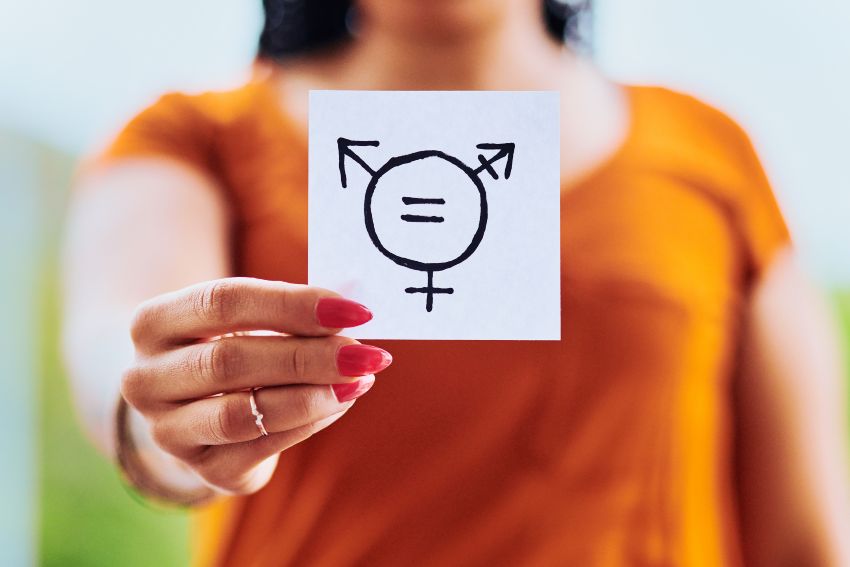18 December 2020
What’s Your Pronoun?
By Christine Steele
[3 minute read]

I didn’t think too much about personal pronouns until this past spring, and now they are on my mind often. I’ve learned the importance of why they matter. The copyediting courses I teach online were moved to a new learning management system, Canvas, in April. Canvas offers a drop-down menu in the settings to choose your personal pronouns, if you’d like to share them. They are then included beside your name when you post on the discussion board.
Sometimes people might make assumptions about the gender of another person based on that person’s appearance or name. Using someone’s correct personal pronoun is a way to respect them and create an inclusive environment, even online.
 Besides they, which was Merriam-Webster’s 2019 Word of the Year, there are alternatives to using he and she when someone’s gender is unknown or when they are not simply male or female. They is not the only option. There are less-familiar pronouns, such as ze, zir, and hir, but singular they has become a pronoun of choice for many. It’s important to become familiar with other pronouns.
Besides they, which was Merriam-Webster’s 2019 Word of the Year, there are alternatives to using he and she when someone’s gender is unknown or when they are not simply male or female. They is not the only option. There are less-familiar pronouns, such as ze, zir, and hir, but singular they has become a pronoun of choice for many. It’s important to become familiar with other pronouns.
The Human Rights Campaign Foundation points out that being misgendered can be hurtful, angering, and even distracting. Everyone should have the option of expressing their preferred name or personal pronoun, and the way this is communicated may vary across settings—formal vs. informal, email vs. in-person/virtual meetings, name badges, business cards, and so on.
The following is what I’ve learned from a training session, along with some excellent resources, about the different types of pronouns and how to use them.
- Avoid saying preferred pronouns because they aren’t preferences. They are personal.
- Use the phrase preferred name. Preferred name, unlike preferred pronouns, is OK because a name is a preference.
- When you find yourself in a position to ask someone for their pronoun, consider asking, “Are you comfortable sharing your pronouns with me?”
- MyPronouns.org will teach you the what, why, and how of sharing and asking for pronouns and what to do if you make a mistake when addressing someone with the wrong pronoun.
- The Human Rights Campaign Foundation has a free handout reviewing what’s in a pronoun, the persistence of gender norms, and why pronouns matter.
- Read the book "What’s Your Pronoun?: Beyond He and She" by Dennis Baron. Published in January 2020, it’s based on 40 years of empirical research and examines the alternatives to he and she. The author has collected more than 200 coined pronouns going back to 1770, and each one is documented by publication, date, and page number, as he wants his readers to find them. His story is how we got from he and she to zie and hir and now singular they.
Here are some fun facts in the book:
- Singular they first appeared in 1375.
- It was once a common pronoun for infants, but it’s rarely used today. As for adults, though, it has been used since the 16th century as a way to insult, dehumanize, or mock a person.
- In 1850, hiser was coined as a blend of his and her.
- Gender-neutral and nonbinary pronouns have been on Sephora ads and Oreo cookie packaging. Oreo promoted “Pronoun Packs” for PrideFest in 2019 to celebrate inclusivity.
As Baron says in his book, even though some words may seem to include others, they may also exclude them. And not all languages treat gender the same way.
Better understanding language and its origins, and using language correctly, can help us be courteous and respectful to others while also leading us toward being more effective and respectful editors ourselves.
Christine Steele (she/her) is an instructor for the Copyediting program at UC San Diego Extension and freelances as Steele Editing & Writing. This article first appeared in the Fall 2020 ACES: The Society for Editing newsletter and is shared with permission.
All University of California campuses acknowledge a range of gender identities. Students, employees and affiliates have the option of identifying as man, woman or nonbinary as well as the ability to state a lived name differing from their legal name.